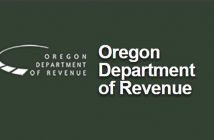In 2008, the fate of the world’s economy was decided in just a matter of weeks. This is well documented in Andrew Ross Sorkin’s bestselling book: Too Big to Fail. I recently had an opportunity to hear Sorkin speak in Bend. He shared when he wrote his book he was only thinking about financial corporations being too big to fail and he had no idea just three years later this concept would also pertain to municipalities, states and countries! Volatility and uncertainty have certainly been the themes lately as Sorkin was quick to point out.
The volatility of the U.S. stock market spiked in 2011, as popular measures of market ups and downs proved that stocks were nearly twice as choppy as long term historical averages. Concerns over European debt and a global slowdown drew down the EAFE international index by 12 percent and emerging markets stocks by over 18 percent. In contrast, the S&P 500 stock index finished the year with a positive return of 2.1 percent. U.S. stock returns were driven by a strong finish to the year, as the S&P 500 index surged by nearly 12 percent in the
fourth quarter.
Retirees often find themselves immobilized in fear as they wonder if they will be able to live the life they have always imagined for the remainder of their lives. Many ask themselves if they should even stay in the market, hoping it will stabilize and rebound to pre- 2008 highs or if they should get out now given the markets could fall yet again.
Research has shown time and time again, it is essentially impossible to time markets. Highly volatile markets can be particularly unkind to stock pickers and market timers, as assumed trends can shift abruptly, leaving highly active tactical managers to zig when the market zags upward.
The 2009 study, Quantitative Analysis of Investor Behavior, by research firm Dalbar, found that though the S&P 500 averaged an 8.35 percent return over a 20-year period ending in 2008, individuals failed much worse in their equity investments, averaging only a 1.87 percent annual return. A buy and hold strategy, rather than getting in and out of the market would have been in investors’ best interests.
Being that it is essentially impossible to time the markets and retirees can’t afford to part take in market losses-wouldn’t it be great if there was another option where one didn’t have to worry about when to get in or get out? Wouldn’t it be valuable if there was an investment strategy that enabled one to stay invested in the market and also provide guarantees that they have an income stream for life regardless of market performance? Today these benefits are finally available! When they are used appropriately, for the right portion of one’s portfolio- they can save ones retirement income, something they have worked most of their lives to accumulate.
The modern day Variable Annuity (VA) with living benefits can ease investors’ anxieties and lead to better investment outcomes. They help investors avoid common behavioral pitfalls such as attempts at market timing while maintaining the market exposure needed for long-term investment success. These advantages have never been more apparent than during the current period of extreme volatility that Sorkin referred to.
The decision for a retired investor of whether to get out or stay in the market is of the utmost importance. However, if they elect to put the money into a VA with a living benefit, this decision is no longer an issue. They are still invested into the market as the investments inside of the VA structure are similar to mutual funds and ETF’s including exposure to stocks, bonds, REITs, natural resources and international markets. However, their performance downside is now protected because they have guaranteed lifetime income throughout
their retirement.
To put numbers on this scenario, let’s suppose a client has $500,000 invested in a retirement account. If the investor chooses a five percent living benefit, they are guaranteed $25,000 a year in retirement. Even if the markets were to crash and their $500,000 account value dropped to $250,000, they can still withdrawal $25,000 because of the guarantees. Eventually the withdrawals can eventually reduce the contract value to a zero, but even here with a zero balance, the client will receive $25,000 for the rest of their lives.
It even gets better. The contract holder is protected from downside market performance as stated above and yet still has room for growth on the upside. Suppose for example the market does well and the value of the contract rises to $600,000. This is now the guaranteed amount which the living benefit is calculated off of. This would equate to $30,000 annually with a five percent payout.¹
Such an investment strategy can mitigate the worst of investor behavior as well as underperforming markets and offer investors the guarantees and psychological support needed to maintain market exposure. VAs, like any investment strategy should only be part of the retirement security puzzle. At the very least retirees should consider VAs with living benefits for a portion of their portfolio. By using them, you are able to create a personal pension for yourself that provides guaranteed income for life. There are not too many other ways to
accomplish this.
David Rosell is President of the Rosell Wealth Management in Bend. He is the immediate Past President of the City Club of Central Oregon and a Past Chairman of the Bend Chamber of Commerce. David can be reached at (541)385-8831 or the all new: www.RosellWealthManagement.com.
¹ Guarantees come at an additional cost and are based on the claims paying ability of the individual financial company.
Investment advisory services offered through Rosell Wealth Management, a State Registered Investment Advisor. Securities offered through ValMark Securities, Inc. Member FINRA, SIPC 130 Springside Drive, Ste 300 Akron, Ohio 44333-2431. 800 765-5201. Rosell Wealth Management is a separate entity from ValMark Securities, Inc.




